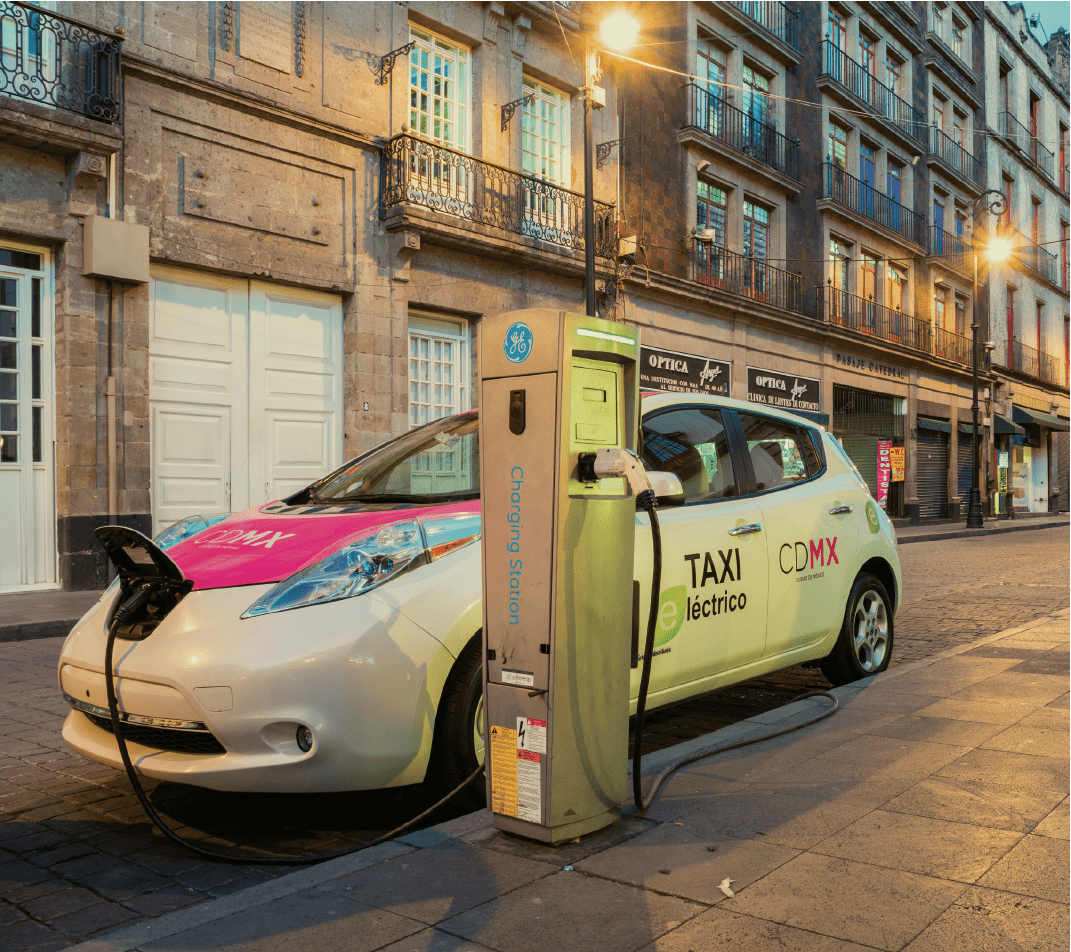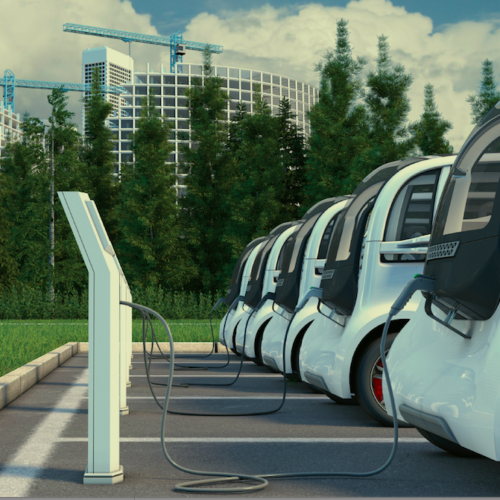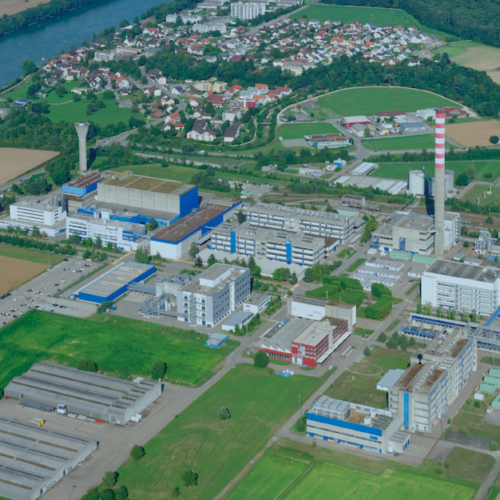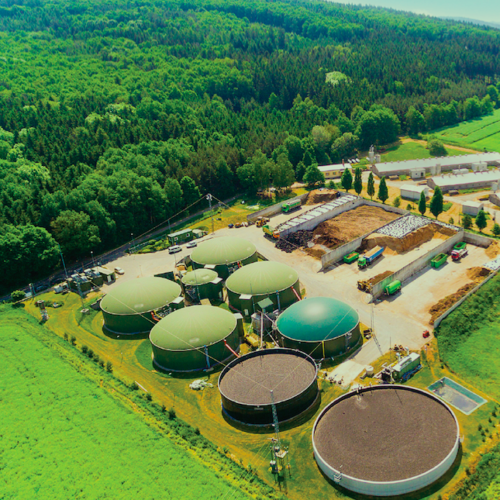More efficient buildings provide multiple benefits including lower emissions, greater comfort, improved health, and lower ongoing costs.

Book | 2018
The Carbon-Free Regions Handbook: Mobility
Transportation currently produces 14% of global greenhouse gas emissions—we can decrease the carbon intensity of transportation while increasing mobility choices and health benefits.
Mobility and transportation are essential components of a community. They define how we access jobs, education, services, and social events. For regional governments, the focus should be on enabling cities to invest in better mobility options, and building the interconnections that integrate these services across municipal boundaries.
Action 4: Electric Vehicle Charging
Description
Increase and improve region-wide infrastructure for electric vehicles through funding, codes to support infrastructure build-out, public-private partnerships to facilitate third-party ownership of infrastructure, building extra capacity to facilitate further growth, and engaging the public for feedback on charger deployment.
Action Documents
- Guangdong Province planning documents (in Chinese)
- Electric Vehicle Chargers Ontario Program (EVCO) Program Guide, 2015
- Gifu Vision for 2050 (in Japanese)
Recommended Resources
- Emerging Best Practices for Electric Vehicle Charging Infrastructure, The International Council on Clean Transportation, 2017
- Removing Barriers to Electric Vehicle Adoption by Increasing Access to Charging Infrastructure, Seattle Office of Sustainability and Environment, 2014
- Comparison of Leading Electric Vehicle Policy and Deployment in Europe, 2016
- Advancing Electric Mobility Through Public-Private Partnerships: The Oregon Case Study, 2017
- CALSTART project portfolio
- Electric Vehicle Chargers Ontario
- “GPG Plans to Invest USD422 Million to Build Regional EV Charging Network in Southeast China,” Yicai Global, 2018

The Catalan Institute for Energy (ICAEN) has launched different initiatives to transform Catalonia into an EV-friendly jurisdiction. One of these is the creation of the Catalan Fast Recharge Infrastructures Network, which will be completed by the end of 2019, and include a network of recharging stations within a 30 km radius.
‐Damià Calvet, Ministry for Territory and Sustainability, Catalonia, Spain
Action 5: Fleet Electrification
Description
Facilitate the adoption of electric vehicles by commercial and government fleet operators through fleet emissions reduction requirements, targeted public policies, tax credits, and increased charging infrastructure. Promote electrification of taxi, carsharing, and police fleets.
Action Documents
- City of Seattle Executive Order 2018-02: Green Fleet, an executive order directing city departments to accelerate a transition to a clean and green city fleet
- Propelling Quebec Forward With Electricity: Transportation Electrification Action Plan 2015–2020
- Qfleet Electric Vehicle Transition Strategy: For the Queensland Government motor vehicle fleet
Recommended Resources
- Transition to a Global Zero-Emission Vehicle Fleet: A Collaborative Agenda for Governments, The International Council on Clean Transportation, 2015
- Electrification Roadmap: Revolutionizing Transportation and Achieving Energy Security, Electrification Coalition, 2010
- Plugged-In Fleets: A guide to deploying electric vehicles in fleets, The Climate Group
- A roadmap for electrifying your fleet
- Washington State Electric Fleets Initiative
- Switched on Scotland Phase 2: An Action Plan for Growth

Our Switched on Fleets initiative has delivered over 500 ULEVs [ultra low-emission vehicles] into the Scottish public sector.
‐Humza Yousaf, Minister for Transport and the Islands, Scotland
Action 6: Clean Vehicle Manufacturing
Description
Set manufacturing efficiency requirements for vehicles, including zero-emission vehicle standards, a low-carbon fuel standard, and air-quality standards.
Action Documents
- British Columbia Renewable and Low-Carbon Fuel Requirements Regulation, 2017
- California’s Zero-Emissions Vehicles Regulations
Recommended Resources
- Multi-State ZEV Action Plan, ZEV Program Implementation Task Force, 2014
- Zero Emission Vehicle Municipal Handbook: A Land Use Guide for Cities and Towns
- 2013 ZEV Action Plan: A roadmap toward 1.5 million zero-emission vehicles on California roadways by 2025, Governor’s Interagency Working Group on Zero-emission Vehicles, 2013
- California Advanced Clean Cars Program
- “What is a clean fuel standard? Lessons from B.C.,” Clean Energy Canada
- Vermont Zero Emission Vehicle Action Plan, Vermont Climate Cabinet, 2014
Action 7: Clean Freight Delivery
Description
Improve freight efficiency through setting efficiency standards, building efficient links between urban, regional, and national logistics networks, and adopting market-based congestion mitigation policies. Address logistics sprawl through planning and zoning decisions and use fiscal and nonfiscal incentives to accelerate the adoption of electric trucks.
Action Documents
- Catalonia’s Law 16/2017 establishing a carbon tax on heavily polluting freight and shipping vehicles
- Go to 2040: Comprehensive Regional Plan, Chicago Metropolitan Agency for Planning, 2010, Chapter 12, “Create a More Efficient Freight Network”
Recommended Resources
- Improving Efficiency in Chinese Trucking and Logistics, Rocky Mountain Institute, August 2016
- Moving Freight: A Strategy for More Efficient Freight Movement, Queensland Government
- Where It Makes Sense for Fleets to Go Electric, NACFE, 2018
- José Holguín-Veras, Cara Wang, Michael Browne, Stacey Darville Hodge, Jeffrey Wojtowicz, “The New York City Off-hour Delivery Project: Lessons for City Logistics,” Procedia – Social and Behavioral Sciences 125, March 2014
- Freight Efficiency Strategies: A White Paper Series to Inform the California Sustainable Freight Action Plan, 2016
Action 8: Public Transit
Description
Support public transit infrastructure through investing in new bus transit routes, donating land for stations and terminals, promoting transportation demand management and transit-oriented development, and implementing real-time information.
Action Documents
- HB2 Implementation Policy Guide, Commonwealth Transportation Board, 2015
- Quebec Sustainable Mobility Policy, 2030 (in French)
- Quebec Sustainable Mobility Policy Action Plan, 2018–2023 (in French)
Recommended Resources
- Transportation Demand Management: State of the Practice, Smart Growth America, 2013
- American Council for an Energy-Efficient Economy (ACEEE) State and Local Policy Database on Transportation System Efficiency
- UpRouted: Exploring Microtransit in the United States, Eno Center for Transportation, 2018
- On Track: How States Fund and Support Public Transportation, National Conference of State Legislatures, 2015
- State-Level Strategies for Reducing Vehicle Miles of Travel, University of California Institute of Transportation Studies, 2017
- “One Card Fits All: Integrated Public Transport Fare System,” Seoul Solution, 2017

Sustainable mobility is easier, more economical, and provides faster travel through integrated means in the built and natural environments.
‐André Fortin, Ministre des Transports, de la Mobilité durable et de l’Électrification des transports (Minister of Transport, Sustainable Mobility, and Transport Electrification), Quebec, Canada
Action 9: Mobility Alternatives
Description
Promote nonmotorized travel through funding for bicycle and pedestrian projects and programs, policies to support multimodal transportation, and laws that ensure the safety of nonmotorized travelers.
Action Documents
- Denmark—On Your Bike: The National Bike Strategy, 2014
- Cycle Policy 2002–2012 City of Copenhagen
Recommended Resources
- Cycling Plans, Strategies, and Design Guidelines, GIZ Transport and Mobility, 2016
- Promoting Non-Motorized Transport in Asian Cities: Policymakers’ Toolbox, Clean Air Asia Center, 2013
- Non-Motorised Transport—Best Practice Manual, Department of Environmental Affairs, South Africa, 2014
- The Innovative DOT: A handbook of policy and practice, Smart Growth America and State Smart Transportation Initiative, 2012
- The Best Complete Street Initiatives of 2017, Smart Growth America, 2017
- Accommodating Bicycle and Pedestrian Travel: A Recommended Approach, US Department of Transportation
- Model Legislation, The League of American Bicyclists
Get More Action Docs
Browse Additional Recommendations by Sector
Regional governments can enable cities to invest in better mobility options, lowering emissions while increasing mobility choices and improving health.
Ensuring that our electricity comes from renewable or zero emission sources is critical to a cleaner and more resilient future.
Regional governments provide the right scale to support industry—the foundation of many regional economies—in transitioning to low-carbon solutions.
Sustainable and regenerative agriculture, forestry, and other land use can help offset some of the large emission impacts that this sector produces.
Managing waste in a sustainable manner can reduce greenhouse gas emissions while also creating economic opportunities.
Regional governments can organize and deliver financial solutions to enable all the recommendations covered in the Handbook.

Engage with Us
Take action today and set your community on an ambitious course to carbon-neutrality bringing economic vitality, cleaner air, and better health and resilience.
 Developed in partnership with the Under2 Coalition
Developed in partnership with the Under2 Coalition 






